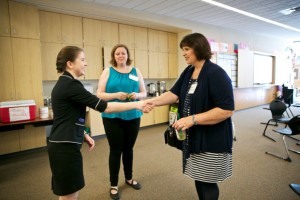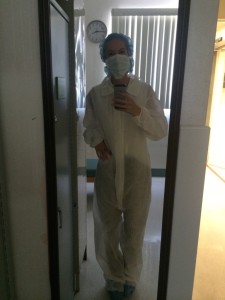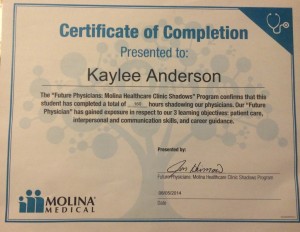Frankly, it took me a while to arrive at the Center for American Progress (CAP). I had first come to know the organization after my sophomore year at Scripps while pursuing opportunities to work in Washington, D.C. for the summer in hopes of testing my political passions in the workplace. I was looking for opportunities which would allow me to explore uncharted professional territory and CAP, a liberal think tank located just off K Street (known colloquially as “Gucci Gulch” in D.C. for its population of ostentatious lobbyists who pour out of monolithic office buildings and flood the streets at rush hour) seemed to fit the bill.
The breadth of experiences that CAP offered its interns were nearly unprecedented. The position included opportunities for me to familiarize myself with political research, but also included opportunities to attend CAP’s many policy discussions with experts, to attend press conferences, to work at an annual conference on progressivism among young people, and even had a baseball team which played other think tanks and political organizations around parks in D.C. every summer. The prospect of working there was appealing without being overbearingly intimidating and seemed like the ideal work environment for someone with an intense interest in politics but a distaste for the pomp, circumstance, and semantics of Capitol Hill.
I was rejected the first time I enthusiastically applied to the Center for American Progress. The second time around, I was offered a position on the Education Policy team at CAP one day after I had accepted another offer with EMILY’s List. Finally, I was determined to give the Center for American Progress another try and was offered a position as an intern for the CAP Action Fund’s War Room department, which provided research services in support of CAP’s long term political initiatives. I accepted, drove up to Washington from my hometown in Kentucky, moved into my summer housing, and hit the ground running as I prepared for an eight-week stint at a policy think tank.
Upon arriving and settling into CAP, it became obvious that my desires to meet inspiring peers and coworkers in a friendly work environment would be fulfilled in my eight weeks. There was no shortage of intelligent, enthusiastic young people—many only a few years older than me and my college-aged co-interns—who were not only successful in politics, but eager to share their experiences with younger, less experienced politicos over lunch or coffee. There were numerous events to attend in- and out-of-office; on one particular occasion, I saw Secretary of State John Kerry speak about the U.S.’s foreign policy towards India in-office in the same week that I was able to attend an event at the White House celebrating community leaders across the U.S. who pushed for an increase in the federal minimum wage.
I was allowed and encouraged to attend a conservative-sponsored anti-Affordable Care Act carnival with my co-interns in the War Room undercover wherein we participated in carnival games, took pictures, and spoke to attendees on the National Mall prior to writing and publishing an article on CAP’s affiliated news blog ThinkProgress about it. I even got to see Scripps alumna Gabby Giffords speak at an anti-gun violence press conference at the Corcoran Gallery of Art early in the summer. I was able to complete research on a breadth of issues, contribute to the social media campaigns of CAP Action and CAP Fair Shot (an initiative to provide equal opportunities and resources to young women and families) and even work on social media and messaging for an MSNBC television show hosted by a friend of someone in my department. The work experience at CAP was everything I had been looking for in a D.C. internship and more.
The internship was one of the most rewarding experiences that I’ve had professionally. I had a great working relationship with my peers and supervisors, produced meaningful work that I took pride in, saw many of my political foes and role models in person, became more comfortable with working full-time in an office environment, and most importantly, I felt comfortable enough in my work environment to acknowledge that even under the best of circumstances, I enjoy working in interpersonal capacities more thoroughly than I enjoy working strictly at a desk doing research. Upon reflection, what I found most intensely rewarding about my CAP experience was the relationships I was able to forge with staff and fellow interns, which allowed me to feel supported and to produce better work.






